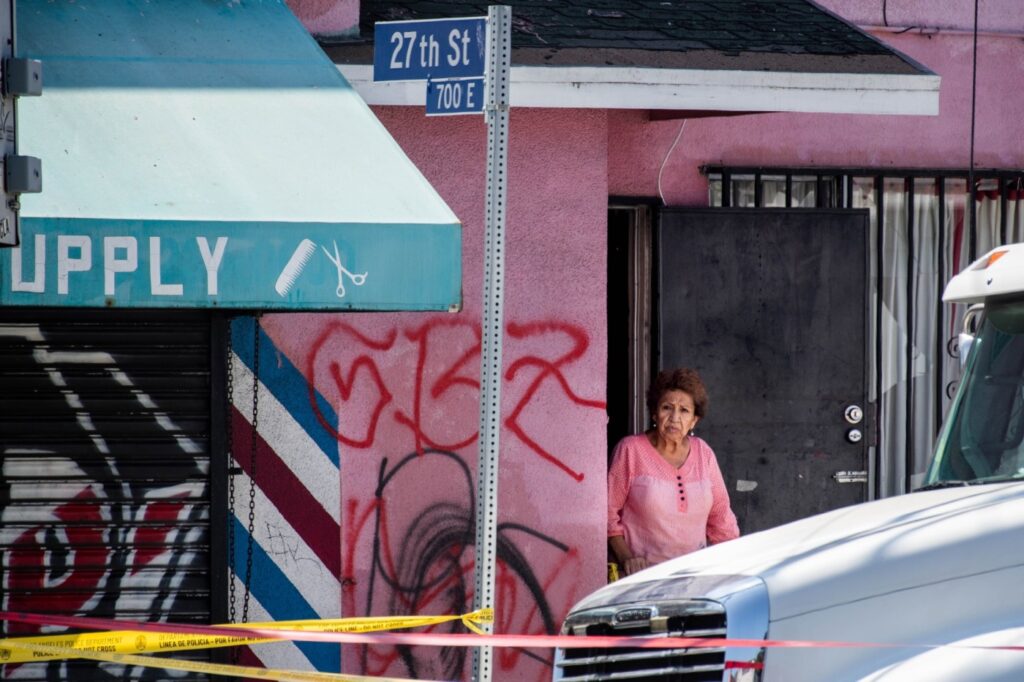
A bomb technician expressed multiple concerns that a Los Angeles Police Department bomb squad was loading too much explosive material inside a total containment vessel before a massive explosion of illegal fireworks injured 16 people, destroyed the truck and damaged dozens of homes and vehicles in South Los Angeles last year, according to a report by the Office of Inspector General.
In all instances, the concerns were brushed aside by other members of the bomb squad and a detective who was their supervisor, the report said.
The report, which will be discussed in a March 1 meeting of the Board of Police Commissioners, echoed many of the findings reported in a September 2021 report by the Bureau of Alcohol, Tobacco, Firearms and Explosives, which found the squad overloaded the chamber with too much charge.
But it also included excerpts from interviews with some of the bomb technicians and their supervisor during their investigation into the discovery of the illegal fireworks in the 700 block of East 27th Street, near San Pedro Street, June 30.
“Based on my experience and everything, I said,’Uh, this is too much to do one shot, we’re gonna break it up right?’” the expert, identified as Bomb Technician C, was quoted as saying in an interview with ATF agents.
He again expressed concern while he and another technician were building the counter charge to set off the explosion within the chamber.
“I have a bad feeling…this is not good…this is too big,” Bomb Technician C was quoted as saying.
He also told the supervisor, identified as Detective A, that the material was too heavy, the report said. His colleagues told him the amount was not excessive and that he needed to relax.
Detective A told ATF investigators that he opted for a “hands-off” approach to leadership as he wanted his technicians to feel more comfortable and to allow them to come up with their own plan of action, the report said.
Bomb Technician C was identified as having 18 years of experience on the bomb squad, at least six years more than the four other technicians assigned that day.
The report reiterated an ATF report, which revealed the technicians never physically weighed the explosive material, instead visually estimating the weight before deciding to detonate it all at once.
The visual estimates were common practice among the bomb squad, according to the OIG report, which also determined a lack of training and supervising deficiencies were factors in the explosion.
The technicians believed they were putting about 16.5 pounds of explosive material into the chamber, however, the ATF determined a total of 42 pounds were inside the containment vessel, far exceeding its capacity of 25 pounds of explosive weight.
The explosion left 75 residents displaced, damaged nearly 40 vehicles, impacted 13 businesses and led to the red-tagging of three houses, the OIG report said.
Police were called to the block after a resident reported a man selling fireworks from his home. Officers later found boxes stacked eight- to 10-feet high in the backyard.
The man, identified as Arturo Ceja III, was arrested and, in August, pleaded guilty to a federal count of transportation of explosives without a license.
He faces a maximum sentence of 10 years in federal prison, though a sentencing date has yet to be scheduled, said Ciaran McEvoy, spokesman for the U.S. Attorney’s Office.
